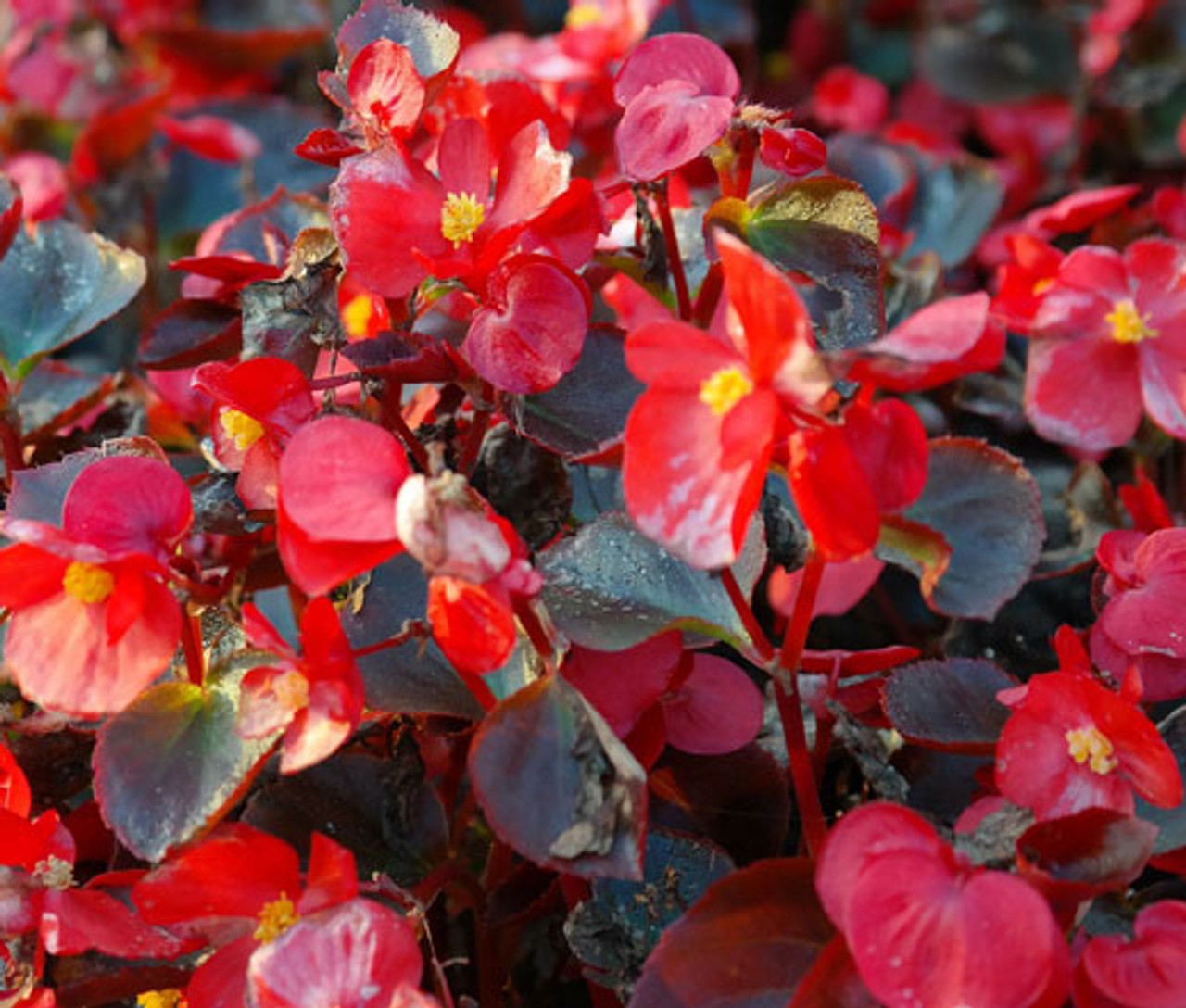Red leaf begonia plant – Immerse yourself in the world of red leaf begonias, captivating plants that bring a touch of vibrant beauty to any setting. This comprehensive guide unveils the secrets of their care, explores their diverse varieties, and delves into their rich history and cultural significance.
Unravel the intricacies of red leaf begonia care, including watering techniques, sunlight requirements, temperature preferences, and soil composition. Discover the art of propagation through stem and leaf cuttings, ensuring the continuation of these botanical wonders.
Care and Propagation
:max_bytes(150000):strip_icc()/growing-wax-begonias-5079936-02-f392d1fd77f64631a64a1237dd34b153.jpg)
Red leaf begonias are relatively easy to care for, but they do have specific requirements to thrive. Providing the right conditions will help your plant stay healthy and produce beautiful foliage.
Watering, Red leaf begonia plant
Red leaf begonias prefer evenly moist soil but do not tolerate soggy conditions. Allow the top inch of soil to dry out before watering again. Avoid getting water on the leaves, as this can promote fungal diseases.
Sunlight
Red leaf begonias prefer bright, indirect light. Avoid placing them in direct sunlight, as this can scorch the leaves. They can also tolerate low-light conditions, but their growth will be slower.
Temperature
Red leaf begonias prefer temperatures between 65-75°F (18-24°C). Avoid exposing them to temperatures below 55°F (13°C), as this can damage the leaves.
Soil
Red leaf begonias prefer well-draining soil with a pH between 5.5 and 6.5. A potting mix specifically designed for begonias is a good option.
Propagation
Red leaf begonias can be propagated through stem cuttings or leaf cuttings. To propagate from stem cuttings, take a 4-6 inch cutting from a healthy stem and remove the leaves from the bottom inch. Dip the cut end in rooting hormone and plant it in a pot filled with moist potting mix. To propagate from leaf cuttings, remove a healthy leaf from the plant and cut it in half. Dip the cut end in rooting hormone and plant it in a pot filled with moist potting mix.
Pests and Diseases
Red leaf begonias are susceptible to a variety of pests and diseases, including aphids, mealybugs, spider mites, and powdery mildew. To prevent these problems, keep your plant healthy by providing the proper care. If you do notice any pests or diseases, treat them immediately with an appropriate insecticide or fungicide.
Varieties and Uses

Red leaf begonias captivate with their stunning foliage and versatility. They offer a wide array of varieties, each boasting unique characteristics that cater to diverse gardening needs.
The ‘Rex’ begonia is renowned for its exquisite, velvety leaves that showcase intricate patterns and vibrant hues. ‘Escargot’ variety flaunts a distinctive spiral shape, while ‘Merry Christmas’ exhibits a bold, deep red coloration. The ‘Begonia masoniana’ exhibits heart-shaped leaves with serrated edges and prominent veins, creating a striking visual effect.
Landscaping and Container Gardening
Red leaf begonias excel in landscaping, adding pops of color and texture to gardens. They thrive in shaded or partially shaded areas, providing visual interest even in low-light conditions. Their compact size makes them ideal for container gardening, allowing them to grace balconies, patios, and indoor spaces.
Indoor Decoration
As houseplants, red leaf begonias bring a touch of the tropics indoors. Their vibrant foliage adds a cheerful note to living rooms, bedrooms, and offices. Their air-purifying abilities further enhance their appeal, contributing to a healthier indoor environment.
Companion Plants
Red leaf begonias harmonize well with a range of companion plants, creating visually appealing garden designs. Ferns, hostas, and impatiens provide a lush backdrop, complementing the bold foliage of the begonias. Silver-leaved plants, such as dusty miller, offer a contrasting element, highlighting the rich red hues.
History and Cultural Significance: Red Leaf Begonia Plant

Red leaf begonias have a rich and diverse history, spanning centuries and cultures. Their origins can be traced back to the tropical rainforests of South America, where they were first discovered by European explorers in the 16th century.
These vibrant plants quickly gained popularity as ornamental species, and their cultivation spread rapidly throughout Europe and beyond. In the 19th century, red leaf begonias were introduced to Asia, where they became highly prized for their beauty and medicinal properties.
Cultural Significance
Red leaf begonias have played a significant cultural role in various regions around the world:
- In China, they are believed to symbolize good luck and prosperity, and are often used in traditional medicine to treat various ailments.
- In Japan, they are known as “Hana-ikada” (flower raft) and are often depicted in traditional paintings and ceramics.
- In Southeast Asia, they are used in traditional ceremonies and rituals, and are believed to possess spiritual powers.
Horticulture and Plant Breeding
Red leaf begonias have played a pivotal role in the development of horticulture and plant breeding. Their distinctive foliage and vibrant colors have inspired numerous cultivars and hybrids, expanding the diversity of ornamental plants available today.
Through selective breeding, horticulturists have developed red leaf begonias with a wide range of leaf shapes, sizes, and colors. These cultivars have become popular additions to gardens, patios, and indoor spaces around the world.